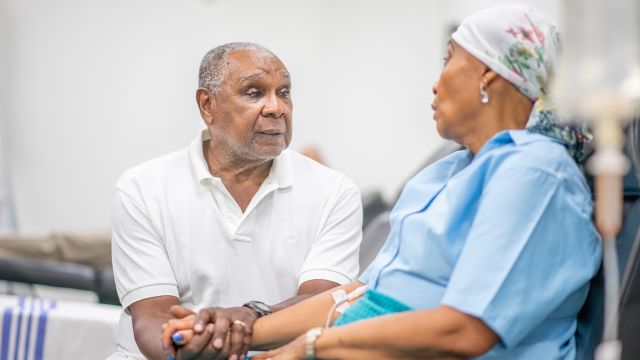Updated on April 3, 2024.
Soft tissue sarcoma, sometimes abbreviated as STS, is a rare form of cancer that begins in the soft tissues of the body. Some of the most common types of STS begin in adipose (fat) tissue, muscle tissue and the digestive tract. There are also types of STS that affect the tissues in and around the joints, connective tissue (which connects and supports organs and other parts of the body), nerve fibers and muscle that supports and helps move bones. There are more than 50 subtypes of soft tissue sarcoma.
Treatment for soft tissue sarcoma depends on many things. Imaging tests will be used to take a picture of the the tumor or tumors and help determine its size, location and general appearance. These tests can also help determine if the cancer has spread to other parts of the body. Biopsies—where samples of the tumor are collected for testing—are used to confirm a diagnosis of STS and to determine the subtype of STS. Biopsies may be performed with a needle (called a needle biopsy), or obtained during surgery (called surgical biopsy).
Because STS is a rare condition and because so many subtypes exist, diagnosing the specific subtype of soft tissue sarcoma can be a challenging task for healthcare providers. Some subtypes of STS are diagnosed by exclusion—healthcare providers eliminate the other possible suptypes of the disease until only one reasonable one is left. It is important to work with an oncologist that specializes in soft tissue sarcoma and has experience treating the disease.
Soft tissue sarcoma may be treated with surgery, radiation therapy, chemotherapy, targeted therapy or a combination of these treatments. The type of treatment will depend on specific features of the cancer found during testing and diagnosis, as well as someone's personal situation and preferences, including age, overall health and medical history.
Surgery
Surgery to remove the tumor or tumors is the preferred treatment for most cases of soft tissue sarcoma. For small tumors, and cancer that has not spread to other areas of the body, surgery may be the only treatment used. When the cancer has spread to other areas of the body, surgery may be used in combination with other treatments.
Radiation therapy
Radiation therapy is a treatment approach for cancer that utilizes high doses of radiation to kill cancer cells. It is also called radiotherapy. Radiation therapy may be used to shrink a tumor before surgery (to make it safer to remove with surgery), or used after surgery to kill off any cancer cells that remain after a tumor was removed. In some instances, radiation is used during surgery and applied directly to the cancer, which is called intraoperative radiation. Radiation is also used to shrink or kill tumors when surgery is not possible. In many instances, radiation therapy is used in combination with chemotherapy.
Chemotherapy
Chemotherapy, or chemo, is treatment with drugs that kill cancer cells or slows their growth, and it can be used for certain types of soft tissue sarcoma. Because chemotherapy is a systemic treatment—meaning it goes throughout the entire body instead of a specific area of the body—it is often used when a cancer has spread beyond the initial site. With STS, chemotherapy is often used in combination with surgery, radiation and targeted therapies. Chemotherapy may also be used as an adjuvant therapy, or a therapy that is used to prevent cancer from coming back after surgery or other initial treatment.
Targeted therapy
Targeted therapies are drugs that are designed to target specific changes found on cancer cells that enable them to grow, spread and survive. They specifically target cancer cells which can minimize damage to healthy cells, although targeted therapy drugs do have side effects. Targeted therapy drugs are often used in combination with chemotherapy, and are a treatment option for only certain types of soft tissue sarcomas.
For further questions about treatment for soft tissue sarcoma and how your insurance covers, speak with your healthcare provider.






